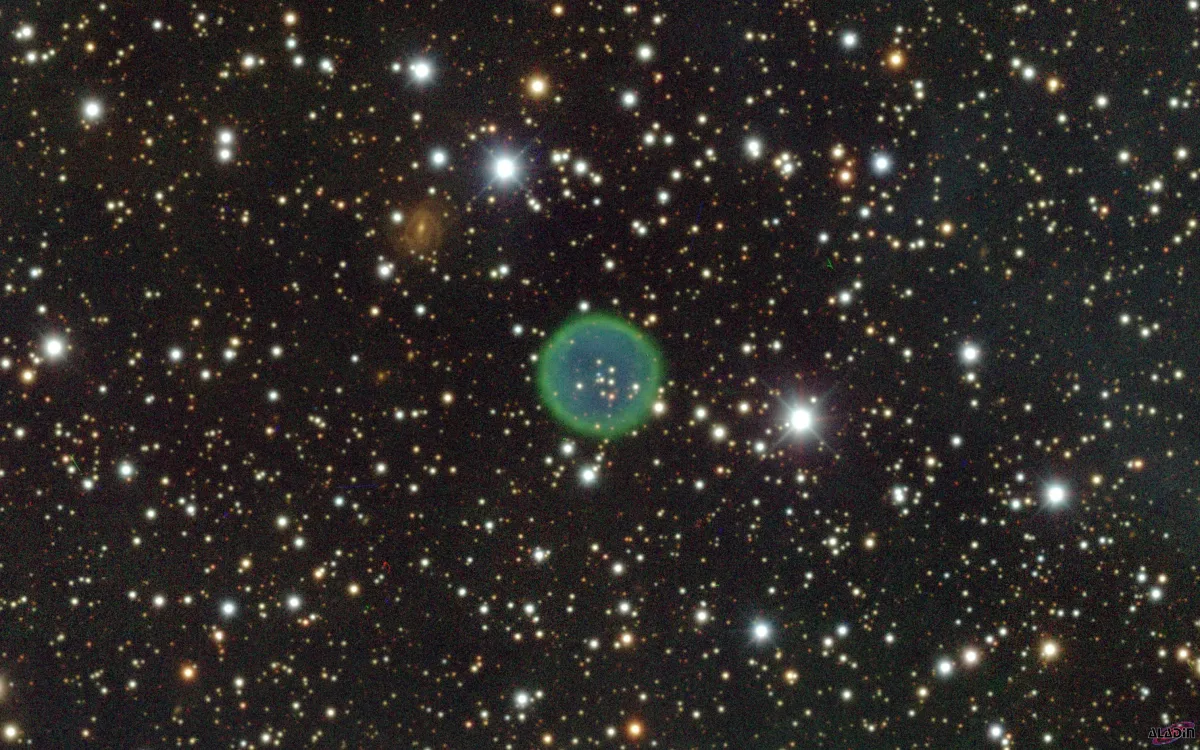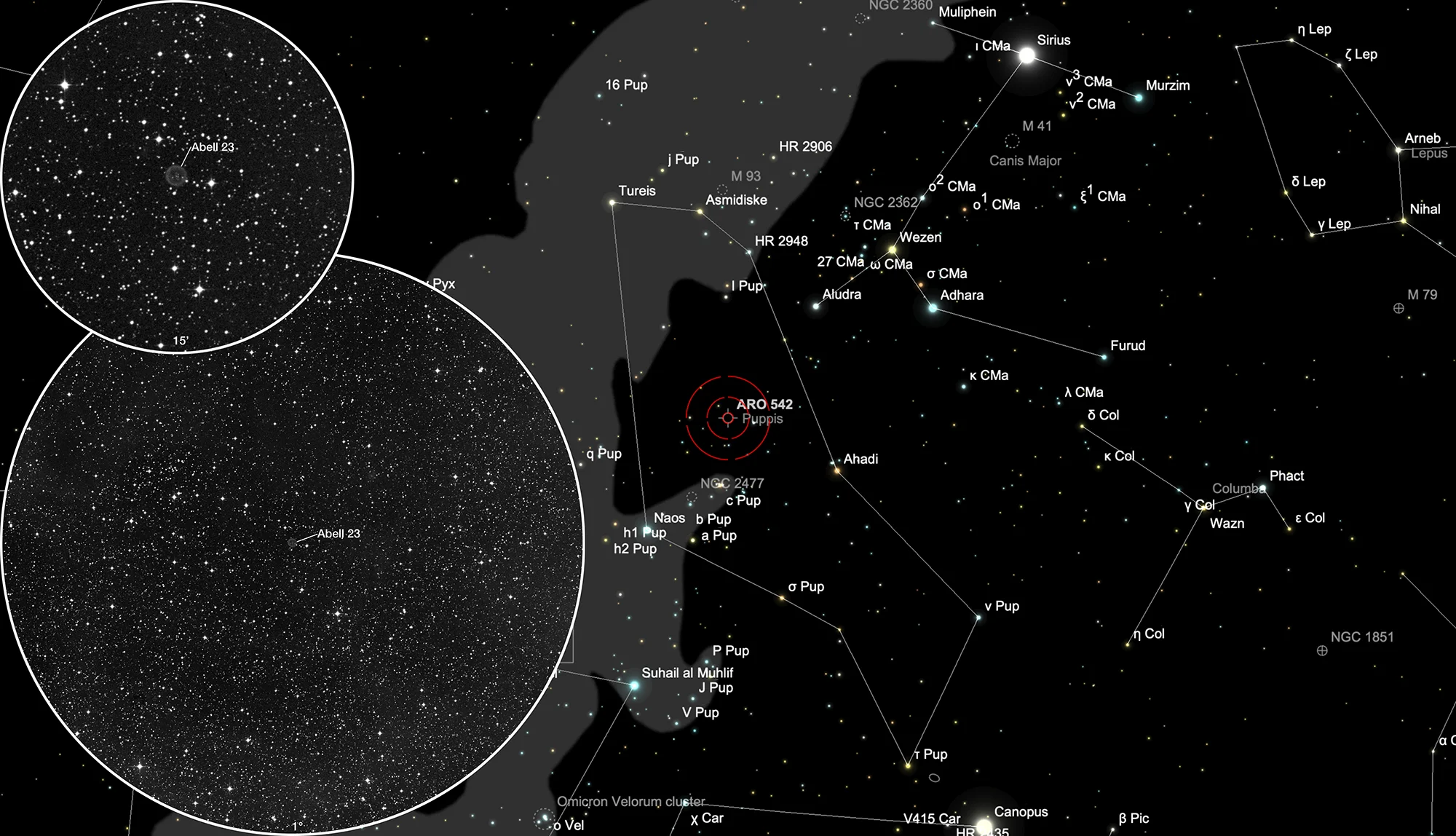Planetary Nebula Abell 23

History
The planetary nebula Abell 23 was discovered in 1964 by the American astronomer George Ogden Abell on the photo plates of the Palomar Observatory Sky Survey (POSS). In 1966 Abell published a completed list including the size and description of the 86 planetary nebulae discovered on the POSS photo plates. The PN was then listed as number 23 (A66 23). He described the morphological appearance of the PN as «D» (a ring of variable thickness). [332]
The designation PK 249-5.1 originates from the two Czechoslovak astronomers Luboš Perek and Luboš Kohoutek, who in 1967 compiled a catalog of all the planetary nebulae of the Milky Way known at the time. [146]
The lesser known designation ARO 542 originates from 1971 survey of microwave radiation from planetary nebulae conducted by Canadian radioastronomer Lloyd A. Higgs using the 46-metre Algonquin Radio Observatory in Ontario, Canada. [136, 137]
Physical Properties
| Designations | PN G249.3-05.4: A 23, PK 249-05.1, ARO 542, ESO 368-10 |
| Right Ascension (J2000.0) | 07h 43m 19s |
| Declination (J2000.0) | -34° 45' 13" |
| Dimensions | 54." (optical) |
| Discoverer | ABELL 1964 |
Finder Chart
The planetary nebula Abell 23 is in the constellation Puppis. On 15 January it is in opposition to the Sun and crosses the meridian at local midnight. It is best observed from September to June, although it rises only about 8° above the southern horizon.
